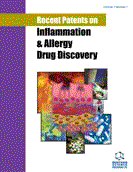Abstract
Severe bronchial obstruction due to one of the major pulmonary diseases: asthma, COPD, or emphysema often requires mechanical ventilation support. Otherwise, patients are at risk of severe hypooxygenation with consecutive overloading and dilatation of the right cardiac ventricle with subsequent failure. This review focuses on how to manage a calculated ventilation therapy of patients suffering from bronchial obstruction and relevant patents. Options and pitfalls of invasive and non-invasive ventilation in the intensive care setting regarding clinical improvement and final outcome are discussed. The non-invasive ventilation is very efficient in treating acute or chronic respiratory failure in COPD patients and is capable of shortening the duration of hospitalization. Further non-invasive ventilation can successfully support the weaning after a long-lasting ventilation therapy and improve the prognosis of COPD patients. “Permissive hypercapnia” is unequivocally established in invasive ventilation therapy of severe bronchial obstruction in situations of limited ventilation. When intrinsic positive end-expiratory pressure (PEEP) and elevated airways resistance are present PEEP may be useful although external-PEEP application relieves over-inflation only in selected patients with airway obstruction during controlled mechanical ventilation. Upper limit of airways peak pressure used in “protective ventilation” of adult respiratory distress syndrome (ARDS) patients can be exceeded under certain circumstances.
Keywords: ARDS, asthma, COPD, emphysema, obstruction, PEEP, permissive hypercapnia, ventilation therapy.
 87
87


















